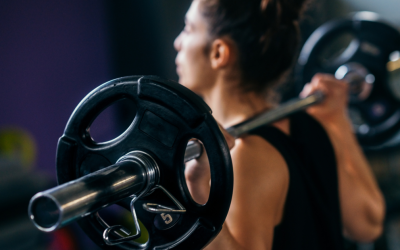Chiropractic Care for Swimmers
Swimmers often push their bodies to the limit. Due to rigorous training schedules and repetitive motions inherent in swimming, many athletes suffer from musculoskeletal issues. Chiropractic care has emerged as an effective solution for enhancing mobility, promoting recovery, and boosting overall performance in swimmers. This holistic approach addresses existing pain and focuses on preventing future injuries.
Moreover, chiropractic practitioners utilize various techniques to treat swimmers, including spinal adjustments, soft tissue therapy, and personalized exercise regimens. Each method aims to restore optimal function and alignment. As a result, swimmers can experience an improved range of motion and reduced discomfort, leading to enhanced performance in the water.
Understanding the Role of Chiropractic Care
Typically, a chiropractor assesses the swimmer’s posture, biomechanics, and movement patterns before recommending a tailored treatment plan. This individualized approach allows athletes to address current issues and preemptively tackle potential problems. Overall, incorporating chiropractic care into a swimmer’s training regimen can lead to significant performance improvements.
Benefits Beyond Pain Relief
Significantly, the benefits of chiropractic care extend far beyond pain relief. Many swimmers report increased energy levels, better sleep quality, and enhanced mental clarity after regular adjustments. Consequently, this supports athletes in maintaining peak performance during training and competition.
In addition to these physical and mental benefits, chiropractic care can be crucial in enhancing a swimmer’s overall well-being. By focusing on the spine and nervous system, chiropractors help ensure that the body’s communication pathways function optimally. This can lead to improved coordination and reaction times, essential for competitive swimming. Furthermore, the emphasis on preventive care means that swimmers can enjoy a longer, healthier career, minimizing the downtime that often comes with injuries.
Another important aspect of chiropractic care for swimmers is the emphasis on education and self-care. Chiropractors often give athletes valuable insights into proper body mechanics, stretching techniques, and strengthening exercises tailored to their needs. This knowledge empowers swimmers to take an active role in their health, fostering a greater understanding of their bodies and how to maintain peak performance over time. By integrating these practices into their daily routines, swimmers can enhance their resilience against the physical demands of their sport.
Common Injuries in Swimming
Swimming injuries can stem from various sources, including poor technique, overuse, and muscle imbalances. Identifying and understanding these common injuries is crucial for swimmers and coaches alike. By recognizing the signs early, athletes can seek appropriate treatment and prevent further complications.

Some common swimming injuries include:
- Shoulder impingement syndrome
- Swimmer’s shoulder (rotator cuff injuries)
- Lateral epicondylitis (tennis elbow)
- Knee injuries (jumpers knee) due to flip turns
- Lower back pain from improper technique
Interestingly, swimming’s nature means that many of these injuries are associated with the repetitive motions of strokes. In contrast to other sports, swimmers often experience bilateral strain, as they use both sides of their bodies. Thus, the emphasis must be on maintaining balance through appropriate training and recovery strategies.
Additionally, environmental factors such as water temperature, pool depth, and even the type of swimming gear can influence injury risk. For example, colder water can lead to muscle stiffness, increasing the likelihood of strains, while poorly fitted goggles may cause discomfort that distracts from proper technique.
Recognizing Early Signs
Crucially, swimmers need to be vigilant about recognizing early signs of injury. Symptoms such as persistent pain, swelling, or a decrease in performance can indicate the onset of an injury. Addressing these symptoms promptly with the help of a chiropractor can prevent them from escalating into more severe conditions.
Furthermore, maintaining an open line of communication with coaches and teammates can foster a supportive environment where athletes feel comfortable discussing their physical concerns. This proactive approach not only aids in early detection but also encourages a culture of injury prevention and awareness within the swimming community.
Importance of Consistent Training
Moreover, consistent training habits play a vital role in injury prevention. Swimmers who incorporate cross-training, strength training, and flexibility exercises into their routine can enhance muscular balance and reduce their risk of pulling or straining muscles.
Hence, a well-rounded training approach can be beneficial in maintaining a swimmer’s longevity in the sport.
Additionally, focusing on technique refinement is essential; swimmers should regularly engage in drills that promote proper form and body alignment. This optimizes performance and minimizes the risk of injury by ensuring that the body moves efficiently through the water.
Nutrition also plays a critical role. A well-balanced diet can support muscle recovery and overall physical resilience, further contributing to injury prevention strategies.
How Chiropractic Adjustments Improve Flexibility and Mobility
Flexibility and mobility are essential for swimmers to perform at their best. Effective swim strokes require fluid movement; even a slight restriction can hinder performance. Chiropractors utilize spinal adjustments to improve alignment, which can lead to better overall flexibility.
By focusing on the spine, chiropractors can help ensure that the nervous system functions optimally, allowing for enhanced communication between the brain and muscles. This improved communication can lead to more coordinated movements, which is crucial for executing complex swim strokes efficiently.

Furthermore, the adjustments made by chiropractors help relieve tension in muscles surrounding the joints. Releasing this tension allows swimmers to perform more freely, reducing resistance in the water. Hence, increased flexibility enhances technique and can lead to improved lap times. Additionally, chiropractic care often includes soft tissue therapies, such as massage or myofascial release, which further aid muscle recovery and flexibility. These therapies can help to break down scar tissue and improve blood flow, which is vital for muscle repair after rigorous training sessions.
Technique Optimization
Essentially, a well-aligned spine contributes to optimized technique. Swimmers can reach higher speeds when they don’t have to compensate for restricted movement. Therefore, regular chiropractic visits can be pivotal in ensuring an athlete can execute each stroke precisely and efficiently. Moreover, adjustments can also enhance proprioception—the body’s ability to sense its position in space—which is critical for maintaining balance and body alignment during swimming. This heightened awareness can help swimmers make subtle adjustments in their technique, leading to a more streamlined and effective performance in the water.
Collaboration with Coaches
Also, collaboration between chiropractors and swim coaches can create a more comprehensive approach to an athlete’s training. Coaches can provide insight into each swimmer’s technique and training regimen, while chiropractors can address physical limitations. Together, they can formulate strategies that ensure the swimmer maintains proper alignment and reduces injury risk.
This partnership can also involve developing personalized training plans incorporating flexibility and mobility exercises, ensuring swimmers enhance their performance and build resilience against common swimming injuries. Athletes can enjoy a holistic approach supporting their physical health and competitive edge by integrating chiropractic care into the overall training program.
Preventing Shoulder Injuries with Chiropractic Care
Shoulder injuries are particularly prevalent among swimmers due to the repetitive motions involved in strokes such as freestyle and butterfly. Chiropractic care can provide valuable preventive measures, thus minimizing the likelihood of shoulder-related issues. Chiropractic interventions can play a pivotal role in enhancing athletic performance by addressing misalignments and ensuring proper biomechanics.

Regular spinal adjustments help maintain optimal shoulder alignment, while therapeutic exercises can strengthen the muscles surrounding the shoulder joint. Consequently, these preventative measures ensure swimmers can train effectively without fearing debilitating injuries. Moreover, chiropractors often emphasize the importance of a holistic approach, which includes physical adjustments, nutritional guidance, and lifestyle modifications to support overall joint health.
Strengthening Exercises
It is paramount to incorporate specific strengthening exercises into regular workouts. Targeting muscles such as the rotator cuff and scapula stabilizers can enhance shoulder stability.
Chiropractors often recommend tailored exercises focusing on strength and flexibility, forming a well-rounded approach to shoulder care. For instance, exercises like external rotations and scapular retractions can be particularly beneficial in building the necessary support around the shoulder joint, allowing swimmers to execute their strokes with greater efficiency and power.
Importance of Warm-Up Routines
Additionally, it is crucial to prioritize effective warm-up routines before diving into practice. These routines should focus on increasing blood flow and mobilizing the joints in the shoulders.
With well-prepared muscles and joints, swimmers can significantly reduce the risk of injury during their training sessions. Incorporating dynamic stretches, such as arm circles and shoulder dislocations with a resistance band, can enhance flexibility and range of motion, setting the stage for a productive workout.
Furthermore, these warm-up activities can also serve as an opportunity for swimmers to mentally prepare for their training, fostering a mindset focused on injury prevention and performance enhancement.
Frequently Asked Questions About Chiropractic for Swimmers
Addressing the common misconceptions surrounding chiropractic care can pave the way for swimmers to consider it as a viable option for injury prevention and performance enhancement. Below are some frequently asked questions:
1. Is chiropractic treatment safe for swimmers?
Absolutely! Chiropractic care is a safe and effective treatment option for swimmers. Chiropractors are trained professionals who assess and treat musculoskeletal issues without invasive procedures. They utilize various techniques tailored to each athlete’s individual needs, ensuring that the treatment is safe and specifically designed to enhance performance and recovery.
2. How often should swimmers see a chiropractor?
The frequency of visits depends on each swimmer’s individual needs. Some may benefit from weekly adjustments during peak training seasons, while others may only require monthly visits. Establishing a routine that aligns with training schedules is key. Additionally, many swimmers find that regular chiropractic care helps them maintain optimal flexibility and range of motion, which are crucial for executing strokes efficiently and preventing injuries.
Ultimately, integrating chiropractic care into a swimmer’s training regimen can enhance their physical health and mental resilience in the water. Given the undeniable advantages, it is worth considering for any swimmer seeking peak performance. Moreover, chiropractors often provide valuable advice on posture, biomechanics, and injury prevention strategies that can further support a swimmer’s goals. Chiropractic care can improve athletic performance by addressing not just the symptoms but the underlying causes of discomfort, allowing swimmers to train harder and recover faster.



